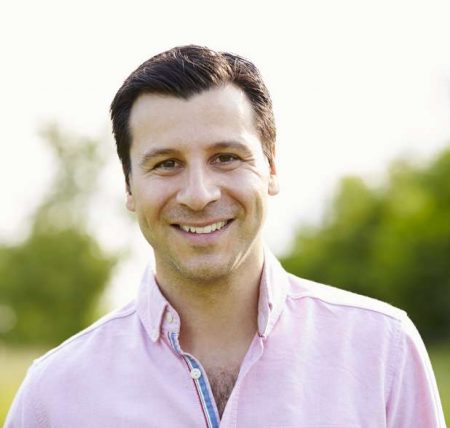
World Class Salvia Addiction Treatment
Salvia (Salvia divinorum) is a plant of the mint family common in southern Mexico and Central and South America. Other common street names are Leaves of Mary, the Shepherdess, Shepherdess’s Herb, Maria Pastora, The Female, Sage of the Seers, Diviner’s Sage, Diviner’s Mint, Sally-D, and Magic Mint.
Salvia is a dissociative hallucinogenic drug. Its main active ingredient (salvinorin A) attaches to elements of the kappa opioid receptors, which regulate human perception. Ingesting the herb Salvia causes hallucinations, altered visual perception, and mood disturbance.
I am here for Alcohol | Drugs | Other Addiction
Salvia is sometimes promoted and sold as a legal cannabis substitute.
Effects of Using Salvia
Salvia use has powerful psychological effects:
- Hallucinations,
- changes in vision, mood, and sensations,
- extreme emotional swings,
- detachment from self, reality, and surroundings, causing a loss of perception between what’s real and what’s not.
People who used salvia also reported the following effects:
- Visual alterations,
- uncontrollable laughter,
- extreme confusion,
- loss of sense of individual awareness,
- hallucinations of flying, twisting, spinning,
- appearances of travel in time and space,
- intensified sensory experiences like unifying with objects,
- out-of-body experiences.
Some common adverse physical side-effects of Salvia are:
- Nausea,
- loss of physical coordination,
- slurred speech,
- irregular heart rate,
- increased breathing rate,
- increased body temperature,
- loss of appetite,
- sleep disturbance,
- panic attacks,
- paranoia and psychosis episodes.

Download Our Brochure
How Long Does the Hallucinogenic ‘Trip’ Last?
The effects of salvia are quick to reach their peak after 5 to 25 minutes and last for around 30 minutes, depending on the method of ingestion and the quantity used. Smoking salvia produces effects more quickly, while taken orally, it acts more slowly but with longer effects – around 60 to 120 minutes.
Health Risks of Using Salvia
Short-term risks of using hallucinogenic substances may include intense sensory experiences (pleasant and unpleasant), altered perception of time, increased blood pressure, dry mouth, problems with coordination, sweating, panic, paranoia, and psychosis. All of these risks carry the risk of significant medical complications, including accidental death and suicide.
There is not much known about the long-term effects of misusing salvia. It may harm learning and memory, cause speech impairment, memory loss, loss of motor control and muscle coordination, anxiety, depression and suicidal thoughts.
Using Salvia divinorum results in the potential danger of long-term brain damage because salvinorin (especially when consumed pure) has similarities to other dissociative hallucinogenic drugs that cause brain damage.
Other health risks of salvia use are headaches, chills, irritability, lung irritation, and insomnia. There is a potential danger of lung cancer from smoking salvia.
Combining salvia with other drugs may produce unexpected interactions with extremely dangerous effects.

Treatment for Salvia Use Disorder
Salvia is still a relatively unknown drug. There is no medication to treat addiction to salvia.
Although little research has been conducted into what behavioural therapies are effective for hallucinogenic addiction, it is recognised among medical professionals that undergoing an intensive inpatient treatment programme with specialised addiction support can successfully treat people with an addiction to salvia.
Contact us for more information about our treatment programme.

How Can Castle Craig Help?
Who will I speak to when I call Castle Craig?
When you call you will reach our Help Centre team who will give you all the information you need to help you decide whether to choose treatment at Castle Craig. If you decide that you would like to have a free screening assessment you will be asked a series of questions to build up a picture of your medical and drug use history as well as any mental health issues you are facing. If you decide you want to proceed with treatment you will be put in touch with our admissions case managers who will guide you through the admissions process.
How long is the rehab programme?
Residential rehab treatment starts at 4 weeks and can go up to 12+ weeks. Research shows us that the longer you stay in rehab and are part of the residential therapy programme, the longer the likelihood of continued abstinence and stable recovery.
How do I pay for rehab?
One concern we sometimes hear from people is how they will fund their rehab treatment. You can pay for treatment at Castle Craig privately, or through medical insurance, and some people receive funding through the NHS. The cost of rehab varies depending on what kind of accommodation you choose.
What happens at the end of my treatment?
Castle Craig thoroughly prepares patients before departure by creating a personalised continuing care plan which is formulated following discussions with the medical and therapeutic team. We offer an online aftercare programme which runs for 24 weeks after leaving treatment, in order to ensure a smooth transition back into your everyday life. Patients leaving treatment automatically join our Recovery Club where they can stay connected via our annual reunion, events, online workshops and recovery newsletters.
